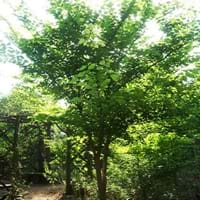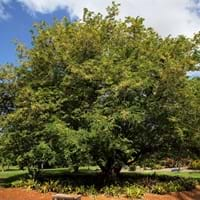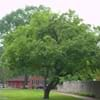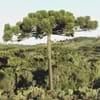Life Span
Perennial
Perennial
Origin
North America, Northeastern United States, Mid-Atlantic United States, North-Central United States, Central United States, South-Central United States, Canada
Africa, India, Southeast Asia
Types
Not Available
Sweet Tamarind, Australian tamarind, Manila tamarind, Velvet tamarind, Spanish Tamarind
Habitat
Woodland Garden Canopy
Subtropical climates, Tropical regions
USDA Hardiness Zone
3-11
9-11
AHS Heat Zone
10-1
Not Available
Sunset Zone
Not Available
Not Available
Habit
Upright/Erect
Spreading
Minimum Width
Not Available
Flower Color
Tan, Sandy Brown
Red, Yellow
Flower Color Modifier
Bicolor
Bicolor
Fruit Color
Green, Sandy Brown
Brown
Leaf Color in Spring
Green
Green
Leaf Color in Summer
Green, Dark Green
Dark Green, Green
Leaf Color in Fall
Yellow, Green
Dark Green, Yellow green
Leaf Color in Winter
Not Available
Dark Brown, Green
Leaf Shape
oblong or obovate
Pinnate
Plant Season
Not Available
Spring, Summer, Fall, Winter
Sunlight
Full Sun, Partial Sun, Partial shade
Full Sun, Partial Sun
Type of Soil
Clay, Loam, Sand
Clay, Loam, Sand
The pH of Soil
Neutral, Alkaline
Acidic
Soil Drainage
Average
Average
Bloom Time
Early Spring, Spring
Late Spring
Tolerances
Not Available
Drought, Salt
Where to Plant?
Ground
Ground
How to Plant?
Seedlings
Layering, Seedlings, Transplanting
Plant Maintenance
Medium
Low
Watering Requirements
Average Water Needs
Do Not over Water, Keep the ground moist but not water-logged
In Summer
Lots of watering
Lots of watering
In Spring
Moderate
Moderate
In Winter
Average Water
Average Water
Soil pH
Neutral, Alkaline
Acidic
Soil Type
Clay, Loam, Sand
Clay, Loam, Sand
Soil Drainage Capacity
Average
Average
Sun Exposure
Full Sun, Partial Sun, Partial shade
Full Sun, Partial Sun
Pruning
Remove damaged leaves, Remove dead branches, Remove dead leaves
Remove damaged leaves, Remove dead branches, Remove dead leaves
Fertilizers
Any balanced general purpose fertilizer
6-6-6 or 8-8-8
Pests and Diseases
Blackspot mold
Aphids, Borers, Mealybugs, Onion thrips, Root weevil, Soft scales, Whiteflies
Plant Tolerance
Drought
Drought
Flowers
Insignificant
Showy
Flower Petal Number
Not Available
Single
Showy Foliage
Insignificant
No
Foliage Texture
Medium
Bold
Foliage Sheen
Matte
Matte
Attracts
Beetles, Birds
Beetles, Birds, Scale Insects
Allergy
Miscarriage, Rash
Diarrhea, Hives, Nausea, Vomiting
Aesthetic Uses
Not Available
Beautification
Beauty Benefits
Beautiful Skin, Heals Damaged Hair, Strong, beautiful hair
Glowing Skin, Good for skin, Improve skin tone, Reduces ageing, Skin cleanser
Environmental Uses
Air purification
Food for animals, Food for birds, Food for insects, Nesting sites for birds
Medicinal Uses
Demulcent, Diuretic, Expectorant, Nutritive
Antioxidants, Inflammation, Rheumatism, Skin Disorders, Sore throat
Part of Plant Used
Fruits, Inner Bark, Leaves
Flowers, Fruits, Leaves
Other Uses
Chewed as a thirst quencher, Tea-like beverage can be brewed, Used as a thickener in soups, Used to make a twine
Culinary use, Used as a nutritious food item, Used as Ornamental plant, Used for its medicinal properties
Used As Indoor Plant
No
No
Used As Outdoor Plant
Yes
Yes
Garden Design
Shade Trees
Edible, Fruit / Fruit Tree, Shade Trees
Botanical Name
ULMUS rubra
Tamarindus indica
Common Name
Slippery Elm
Tamarind tree, Tamarind
In Hindi
Slippery Elm
इमली का पेड़
In German
Rotulme
Tamarinde
In French
Slippery Elm
tamarinier
In Spanish
olmo resbaladizo
tamarindo
In Greek
Slippery Elm
δέντρο Tamarind
In Portuguese
Slippery Elm
tamarindo
In Polish
Slippery Elm
drzewo tamaryndowca
In Latin
Lubricus Elm
tamarind ligno
Phylum
Magnoliophyta
Magnoliophyta
Class
Magnoliopsida
Magnoliopsida
Clade
Angiosperms, Eudicots, Rosids
Angiosperms, Eudicots, Rosids
Tribe
Not Available
Detarieae
Subfamily
Not Available
Caesalpinioideae
Number of Species
Not Available
Not Available
Season and Care of Slippery Elm and Tamarind tree
Season and care of Slippery Elm and Tamarind tree is important to know. While considering everything about Slippery Elm and Tamarind tree Care, growing season is an essential factor. Slippery Elm season is Not Available and Tamarind tree season is Not Available. The type of soil for Slippery Elm is Clay, Loam, Sand and for Tamarind tree is Clay, Loam, Sand while the PH of soil for Slippery Elm is Neutral, Alkaline and for Tamarind tree is Acidic.
Slippery Elm and Tamarind tree Physical Information
Slippery Elm and Tamarind tree physical information is very important for comparison. Slippery Elm height is 1,830.00 cm and width Not Available whereas Tamarind tree height is 1,800.00 cm and width 800.00 cm. The color specification of Slippery Elm and Tamarind tree are as follows:
Slippery Elm flower color: Tan and Sandy Brown
Slippery Elm leaf color: Green
Tamarind tree flower color: Red and Yellow
- Tamarind tree leaf color: Green
Care of Slippery Elm and Tamarind tree
Care of Slippery Elm and Tamarind tree include pruning, fertilizers, watering etc. Slippery Elm pruning is done Remove damaged leaves, Remove dead branches and Remove dead leaves and Tamarind tree pruning is done Remove damaged leaves, Remove dead branches and Remove dead leaves. In summer Slippery Elm needs Lots of watering and in winter, it needs Average Water. Whereas, in summer Tamarind tree needs Lots of watering and in winter, it needs Average Water.





